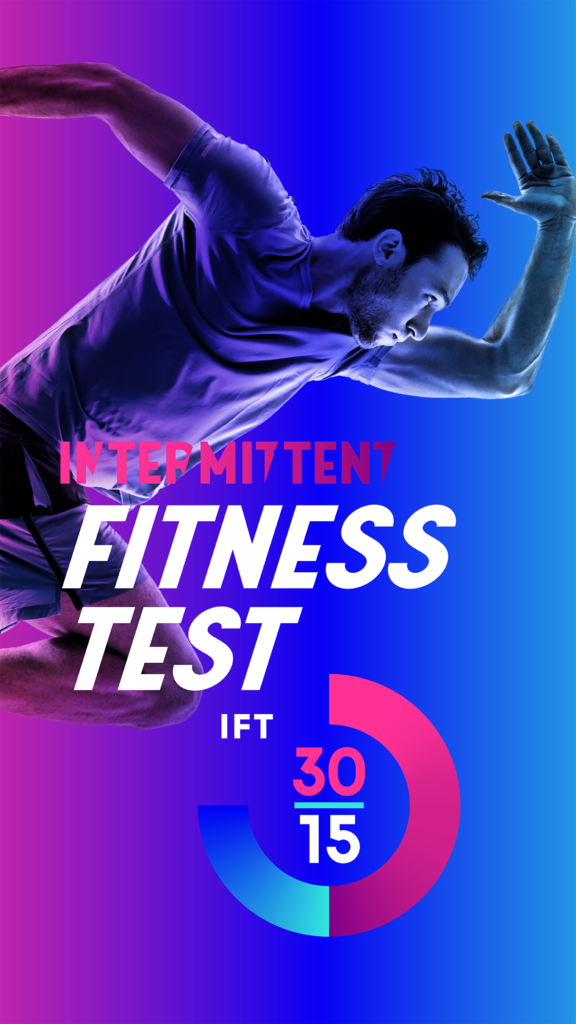
Pour plus d’info sur le test, allez voir le blog dédié au test. For a complete description of the test, related publications and other materials, please see the dedicated blog.
[scroll down for english]
Un nouveau test de terrain pour la détermination d’une Vitesse Maximale Intermittente (V30-15IFT) de référence, parfaitement appropriée pour planifier les séances d’intermittent des joueurs de sport collectif.
En sport collectif (ou dans tous les sports de balle), même si d’un point de vue quantitatif, l’activité d’un joueur pourrait se présenter comme un effort à forte dominante aérobie (plusieurs kilomètres parcourus, effort de plus d’une heure…), une analyse plus fine révèle en fait une sommation d’efforts brefs et intenses entrecoupés de périodes de récupérations diverses, à faible, voire à très faible intensité (1, 2, 3, 7, 8). Ainsi, d’un point de vue physiologique, les facteurs de la performance sont en premier lieu les qualités d’explosivité musculaire(1), puis les qualités maximales aérobies dont dépend la capacité à réitérer dans le temps ces efforts brefs et intenses (4,9).
Jusqu’alors, aucun test de terrain ne permettait d’évaluer à la fois tous ces paramètres. Le 30-15 IFT est le premier test de terrain intermittent en course navette permettant d’estimer la consommation maximale d’oxygène (VO2max) et de déterminer une Vitesse Maximale Intermittente (V30-15IFT), tout en tenant compte à la fois des qualités aérobies, des capacités de récupération et des qualités d’explosivité musculaire des membres inférieurs. De plus, comparativement aux autres tests populaires, le 30-15IFT est perçu comme moins pénible.
Références:
1. Bangsbo, J., Fitness Training in Football: A Scientifique Approach. 1994: Bagsvaerd, Denmark: Storm. 1-336. 2. Cox, M.H., D.S. Miles, T.J. Verde, and E.C. Rhodes, Applied physiology of ice hockey. Sports Med, 1995. 19(3): p. 184-201. 3. Deutsch, M.U., G.J. Maw, D. Jenkins, and P. Reaburn, Heart rate, blood lactate and kinematic data of elite colts (under-19) rugby union players during competition. J Sports Sci, 1998. 16(6): p. 561-570. 4. Gaitanos, G.C., C. Williams, L.H. Boobis, and S. Brooks, Human muscle metabolism during intermittent maximal exercise. J Appl Physiol, 1993. 75(2): p. 712-719. 5. Leger, L.A. and R. Boucher, An indirect continuous running multistage field test: the Universite de Montreal track test. Can J Appl Sport Sci, 1980. 5(2): p. 77-84. 6. Leger, L.A. and J. Lambert, A maximal multistage 20-m shuttle run test to predict VO2 max. Eur J Appl Physiol Occup Physiol, 1982. 49(1): p. 1-12. 7. Rannou, F., et al., Physiological profile of handball players. J Sports Med Phys Fitness, 2001. 41(3): p. 349-353. 8.Stroyer, J., L. Hansen, and K. Klausen, Physiological profile and activity pattern of young soccer players during match play. Med Sci Sports Exerc, 2004. 36(1): p. 168-174. 9. Tomlin, D.L., H.A. Wenger, D.L. Tomlin, and H.A. Wenger, The relationships between aerobic fitness, power maintenance and oxygen consumption during intense intermittent exercise. J Sci Med Sport, 2002. 5(3): p. 194-203.
English
The 30-15 IFT is an incremental, intermittent running test designed to improve run-based high-intensity training prescription. In comparison with continuous and/or linear tests, using the final speed reached at the end of the test (VIFT) allows for lower inter-individual differences in the acute cardiorespiratory responses during HIT – in other terms, the responses are more homogenous when using VIFT. This is related to the fact that VIFT is a compound measure of maximal aerobic power, anaerobic speed reserve, inter-effort recovery and change of direction abilities, which are all taxed during HIT in team and racquet sports (Buchheit 2005, 2008).
For a complete description of the test, related publications and other materials, please see the dedicated blog.

Kaddouri
Pour la prepa physique pour les 40 mètres merci